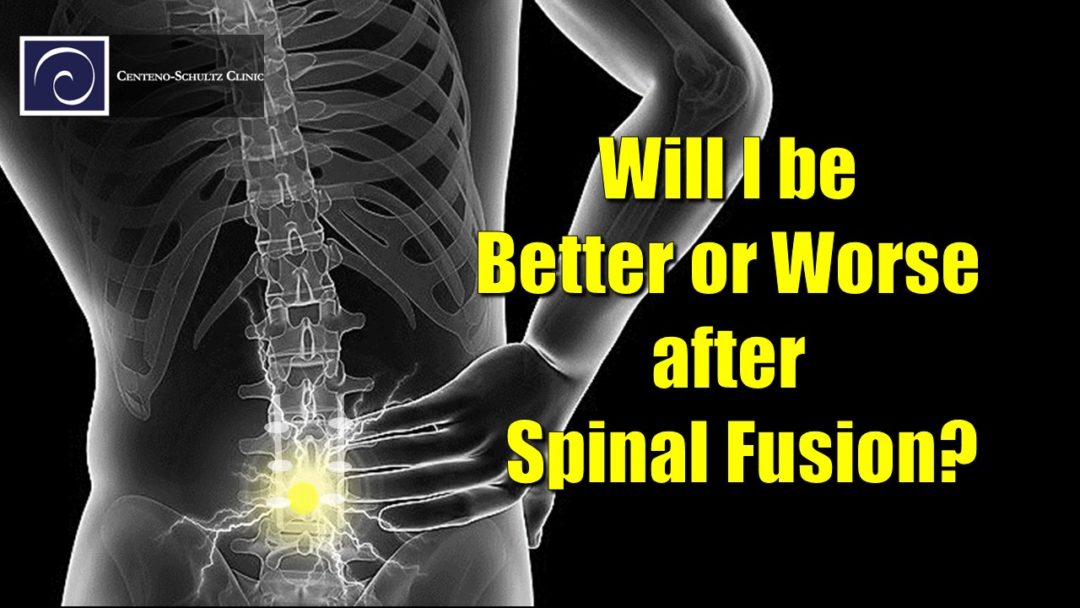Back and neck fusions are surgeries we place into the category of “Damage to Accomplish a Goal,” and, indeed, these spinal fusions are perhaps some of the most damaging orthopedic surgeries out there. Only in the most extreme cases, where the extensive harm this surgery creates is sure to be less than the good that results, should this surgery even be considered. However, in the past two decades, spinal fusion has become the norm of spinal surgery rather than the exception. In addition, there are serious questions as to whether any good at all can come from a back or neck fusion.
You’d think with the explosion in the numbers of spinal fusions there obviously must be a great deal of research that supports this invasive surgery that permanently disables movement in segments of the spine. Unfortunately, you’d be wrong. In fact, the bulk of the research suggests the opposite—that spinal fusion surgery is largely ineffective and does more harm than good.
What Is Spinal Fusion?
There are a number of spinal conditions that may result in your physician recommending spinal fusion, but the general issue is that degeneration in the spine can lead to instability and sloppy movement in the vertebrae (the bones of the spinal column). This extra movement can cause back or neck pain and discomfort.
The spinal column is, in fact, made to move, yet spinal fusion does not support the natural movement of the spine. In fact, the objective of spinal fusion is to do the opposite. Using various hardware devices, such as screws, plates, and rods, the goal is to bolt together segments of the spine, rendering it immobile while grafted bone encourages the two or more vertebrae (the bones of the spinal column) to grow, or fuse, together, permanently disabling movement.
The idea seems simple enough: stopping movement stops additional damage from occurring. But the reality is, stopping movement in a spinal segment places greater stress on adjacent segments (segments above or below the original fusion) of the spinal column, creating more damage in the process. This is so common, it actually has its own medical term—adjacent segment disease (ASD). This surgery is one of the reasons I coined the phrase surgery is damage to accomplish a goal. The goal of spinal fusion is to stop further damage in the affected segment; the damage the surgery causes is adjacent segment disease, often leading to additional spinal fusions as they chase the resulting damage up or down the vertebral chain. Watch the video below to learn more about ASD.
What the Research Tells Us
Thanks to their popularity, there’s no shortage of research on spinal fusions, and what much of the research tells us is bad news for orthopedic surgery. Let’s review a few spinal fusion studies.
First, this surgery has been found to be no better than physical therapy (PT) at improving function and relieving pain long term. This suggests spinal fusion surgery is unnecessary since PT can be just as effective but without all the fusion damage, such as adjacent segment disease. Another study on spinal fusions came to the same conclusions regarding pain and function with the addition of patient satisfaction being no better for spinal fusion than for PT.
Adding fuel to the spinal fusion fire, just last year the prestigious New England Journal of Medicine published a study that concluded that adding a lumbar fusion to a traditional laminectomy didn’t result (results collected at two and five years post-surgery) in improved outcomes over the laminectomy-only study subjects. Just this year, a Swiss study also concluded that there was no benefit to adding a lumbar fusion to a laminectomy (or decompression surgery).
In addition to adjacent segment disease that affects segments of the spinal column above and/or below the fusion, another study found that a cervical fusion (fusing the bones in the neck), can cause the rest of the spine to lose its normal curves and change the angles of both the tailbone and the pelvis.
The upshot? The studies above are brief snapshots in a much broader body of research sounding out against spine fusion surgery. With the constant influx of literature revealing problem after problem with spinal fusion, it’s clear that this truly is a terrible surgery. Unless you are a rare case who has extreme damage (e.g., a traumatic injury to the spine), a spine fusion causes more harm than good. Fixing damage with more damage is rarely the right solution for back or neck pain. The upshot is that we offer a non-surgical alternative to spinal fusion.

